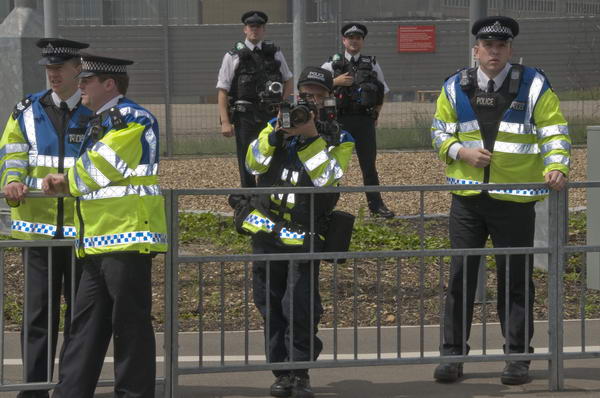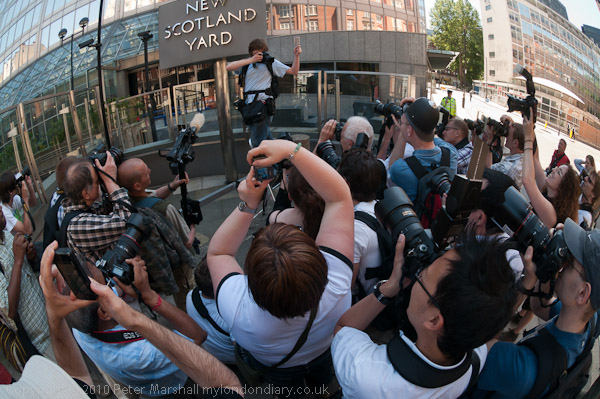Would your pictures pass the picture police?

Police Aesthetics Squad at work?
When police aren’t busy arresting people for posting slightly tendentious Facebook status updates, killing people with those ‘non-lethal’ tazers, or indeed doing their very useful job of protecting the public, they are apparently busy making aesthetic judgements, at least in Long Beach Los Angeles, according to an article in the Long Beach Post (LBP) which was picked up by APhotoEditor a couple of days ago.
Sander Roscoe Wolf, a LBP columnist and photographer whose brief detention and questioning by an officer while photographing decaying paintwork of chemical tanks at a refinery led to the story, apparently passed, as according to the first report on this story in the LBP, after the officer had checked his driving licence and looked through the pictures on his camera, he was told he was welcome to remain and continue to take pictures.
Local police chief Jim McDonnell gave the LBP statement about the affair, saying that that “detaining photographers for taking pictures ‘with no apparent esthetic value’ is within Long Beach Police Department policy.” But he went on to contradict himself, explaining that while police have no specific training in judging whether “a photographer’s subject has ‘apparent esthetic value,’ officers make such judgments ‘based on their overall training and experience’ and will generally approach photographers not engaging in ‘regular tourist behavior’.”
Surely taking photographs ‘with no apparent esthetic value’ is exactly ‘regular tourist behavior‘? Followed of course by uploading them by the bucket-load on to Flickr.
The case and it’s report has aroused a very lengthy series of comments on the LBP, hard to read for the incredible pig-headedness and bigotry displayed by many.
Taking photographs is not in itself a suspicious activity – as the NPPA are reported to have written to the police department to stress, and it is in any case not one that many potential terrorists are likely to indulge openly. With so much satellite imagery on-line as well as StreetView there is little need, and most likely terrorist targets are now festooned with CCTV cameras, making any loitering in their vicinity a risk terrorists are likely to take pains to avoid.
Police – even in Long Beach as the LBP reports – are required to have a “reasonable suspicion of criminal activity” before they make a Suspicious Activity Report on non-criminal activities – such as using camera or binoculars, asking questions or taking notes, and it seems unlikely that the officer who approached Mr Wolf would really have been able to sustain a claim to this. It isn’t enough to suggest – as the police department and their attorney do – that it is all in the mind of the officer; paranoia or gut feeling is not enough and there have to be grounds that would lead a reasonable person (like me!) to suspect the actions, and any officer should be prepared to justify this.
There are the usual discrepancies in this case between the officer’s and the photographer’s account of exactly what happened, with the officer’s story perhaps reflecting more about what should have happened if he had followed correct procedures. It’s a pity that the use of helmet cameras by police is not more widespread, although as an article in The Register commented, “Police thus far seem torn between being able to show their side of a story when they’re in the right and perhaps stitching themselves up in other situations.”

‘I’m a Photographer Not A Terrorist’ at New Scotland Yard, London July 2010
Of course this case is just one of many – and a few others add their experiences in the comments. Here in the UK we are continuing to see similar things happening, and various organisations have been formed to protect the rights of photographers. I’ve posted several times about the activities of I’m A Photographer Not A Terrorist, and Facebook users may like to look at the Amateur Photographer Rights Watch page set up on 2 Aug by “the world’s oldest consumer weekly photographic magazine” which launched its Rights Watch campaign in 2005 after an innocent AP reader was accused of helping to plan a missile attack on Canary Wharf in London by taking ‘reconnaissance’ photographs.